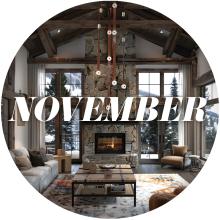We caught up with market researcher, speaker and author of “Marketing the Luxury of Interior Design” Pamela N. Danziger to ask about the changing definition of luxury and how retailers can reinterpret it for their businesses. Read on for her insights into understanding luxury through the lens of today’s consumer.
Lighting & Decor: Younger buyers are less interested in owning luxury items. How does that affect the definition of luxury as it relates to retailers and designers?
Pamela N. Danziger: My main point is that rather than defining luxury by a price point or a brand and putting some sort of industry-/supplier-side definition on what luxury is, retailers really need to understand and interpret luxury from their customer’s point of view. Ultimately, it’s in the eye of the beholder and it’s different for everybody, so it’s really a matter of where luxury lives and resides in the mindset of their customers rather than some brand or price point that’s artificially determined by the industry.
L&D: How has the definition of luxury changed over time?
PD: I think it’s always been about the consumer’s perspective, but I think that in the past — 50 years ago, 100 years ago — consumers were much more influenced by what the industry, suppliers, marketers and brands said to them than they are today because people have access to so much more information.
L&D: How can retailers add luxury to their services without exclusively selling at a certain price point?
PD: One thing they need to do is stop using the word. To me, luxury is an overused term in marketing messages. Consumers look very skeptically at somebody who says that this is a luxury brand or product. The minute you start saying that, they question that and interpret it as “oh, it’s priced more than a comparable product I can find for less — it’s overpriced.”
Luxury means overpriced as opposed to being valuable. I think the way retailers need to start the discussion is to reframe the whole idea around luxury toward people’s experiences and expectations.
Clearly installation and post-sales service add luxury, but it might be useful to pay a call on the customer before they buy and put together a lighting plan. I know interior designers do it, and furnishing stores more and more are offering free interior design services. Customers have an idea of what they want, but they don’t necessarily know how to implement it in such a way as to achieve the effects they want.
L&D: In what ways can retailers make their digital presence more luxurious?
PD: One of the things I think that people should really be looking at is upgrading their website using some of the new tools to put that best foot forward on the Internet because I know they’re putting their best foot forward in their store experience. They have to be equally concerned about doing that on their website.
The website should be designed to draw people to the store. That’s the end goal for specialty retailers: It’s not to make sales on the Internet. If you want to sell some stuff, sell a very limited, curated selection of your best products, but the real goal of web presence should be to attract people to the store.







